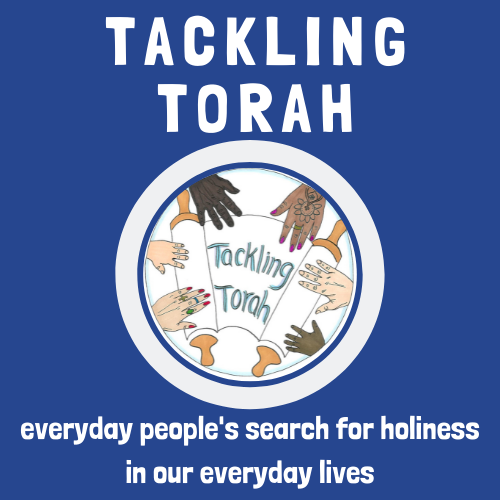
This post originally appeared on Pursue. It is the second in a series on reinventing Jewish rituals (which I will be writing for Pursue). To read the first post on memorials/yartzeits, click here.
June is full of irony: not only is June Pride month, but it is also the unofficial start to wedding season. So many are still fighting for equal marriage. As I write this, lawmakers in Albany are struggling to garner enough votes to make same-sex marriage legal in New York state (see resources to get involved at the end of this post).
As someone who works at the world’s largest LGBTQ synagogue, CBST (Congregation Beit Simchat Torah) I see firsthand how the denial of civil rights affects our families. I also get to see what an amazing tribute it is to the Jewish tradition to have so many people who are deeply rooted in religion, spirituality, and tradition create a community unique to them. Instead of allowing themselves to be turned off by communities who are still figuring out their “stance” on homosexuality, they have a home where their whole identity is able to come together and thrive with others who accept them for who they are and don’t focus on how they do not fit with the “heteronormative” family.
Within Judaism, what does it mean to have a same-sex marriage? What are some of the opportunities for reinventing this ritual? Rabbis debate this topic just as many states debate same-sex marriage bills across the country.
Much of the contemporary Jewish conversation on same-sex marriage draws on pieces of Torah and explains how to reinterpret them in an inclusive way for our same-sex couples, namely, the “be fruitful and multiply” directive. Rabbi Arthur Waskow asks, “Can we not interpret this as ‘to be fruitful and expansive emotionally, intellectually, and spiritually rather than biologically?’ Furthermore, same-sex couples may not have the biological ability to reproduce but with modern technology this no longer means they do not have the ability to create a family.
As Jewish movements struggle with the issue of same-sex marriage in their own communities, countless conversations occur amongst rabbis as to what clergy groups’ official position on same-sex marriage should be. The Reform movement in 2000 voted to adopt a resolution stating “the relationship of a Jewish, same gender couple is worthy of affirmation through appropriate Jewish ritual.”
What do “appropriate” Jewish rituals look like? The basic Jewish marriage consists of the following (in a nutshell):
Marriage Contract (Ketubah)
Canopy (Chupah)
Exchanging Rings
Seven blessings (Sheva Brakhot)
Breaking the glass
While Rabbis change their stances according to their various interpretations of Torah it is important to make sure LGBTQ Jews have a place they can turn for rituals in their lives, including marriage. If you have a litany of weddings to attend this summer, you’ll realize pretty quickly that every wedding is different and dependent on the couple’s custom, so there is a lot of room for interpreting these different components and imbuing them with meaning based on the couple’s values.
Because the traditional Jewish wedding choreography is gender specific, a re-imagining of the different components of the marriage ceremony is necessary. This can be done by same-sex and heterosexual couples, all in the name of promoting marriage equality.
Listed below are some variations of the basic rituals and traditions to get an idea of how you can change your own ritual to be LGBTQ inclusive. Hopefully you’ll see some of these at weddings this summer season!
(From Central Conference of American Rabbis Working Group on Same-Gender Officiation)
Circling:
One person circles the other 3x, then they switch, and they take hands and circle together for a total of 7x.
Kiddush:
Couple holds the cup together.
Rings:
Exchanged and prayers recited, with language such as… “by this ring are you consecrated unto me before God and these witnesses in the spirit of our people,” or “this is my beloved and my friend.”
Breaking the glass:
Broken together, or two glasses broken.
To recognize the continued struggle for equality:
Because so many gays and lesbians sadly still know the oppression and pain of hiding, because so many gays and lesbians still lack equality of civil rights in our world, we break a glass/glasses on this day of celebration to remind us that even in this hour of great joy, our world is still incomplete and in need of healing. May the time be soon, speedily and in our day, when all who are in hiding shall be free and all who are in exile shall come home.
May the shattering of these glasses by _________ and ___________ remind them and us to work towards this time of wholeness, this tikkun, for ourselves and our world. Amen.
How will you be re-imaging the Jewish wedding this summer?
Take action today towards equal marriage rights in New York:
Join friendfactor
Call your senator!
Video: CBST Rabbi Kleinbaum in active protest with Hasidic Rabbi in Albany
Resources:
List of LGBTQ friendly synagogues- Keshet
Resources for Torah related learning- Jewish Mosaic
Kulanu: All of Us A Program and Resource Guide for Gay, Lesbian, Bisexual, and Transgender Inclusion by the URJ Press
See you in July! Tacklingtorah will be taking the week after Pride off to re-coup abroad!




